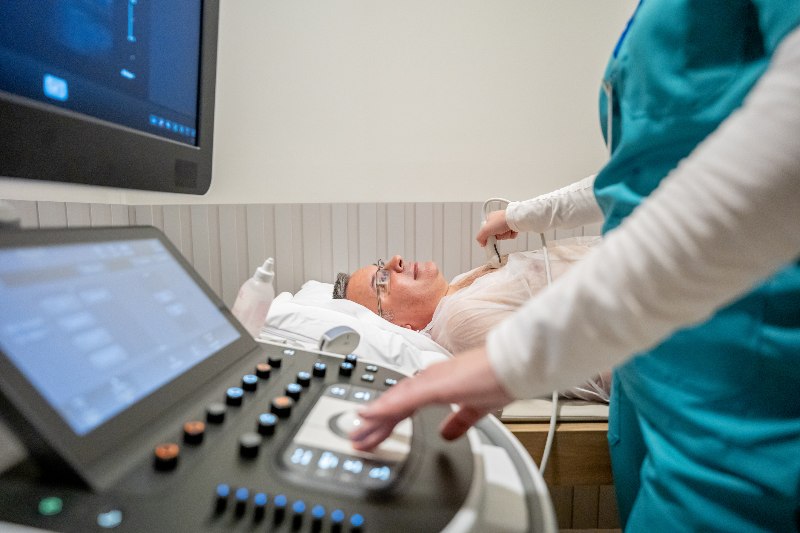What Is a Vascular Ultrasound?

Have you ever wondered how doctors peek inside your blood vessels without making a single cut? It’s only possible because of vascular ultrasound technology. This non-invasive diagnostic test creates images of your veins and arteries using high-frequency sound waves. Think of it as sonar for your circulatory system, allowing healthcare providers to assess your blood flow and detect concerning blockages or abnormalities.
How Does It Work?
No need to worry about needles or anesthesia here. During a vascular ultrasound, you’ll lie down comfortably on an exam table while a technician applies gel to the area being examined. They then run a device over your skin called a transducer, which sends sound waves into your body. These waves bounce off blood cells and return to a transducer. A computer then translates the echoes into real-time images of your blood vessels, which you can see on a nearby monitor.
A vascular ultrasound is completely painless, though you might hear whooshing sounds during the test. Don’t be alarmed; that’s just the sound of your blood flow being translated into audio. The entire process typically takes 30 to 60 minutes, and you can resume your normal activities immediately afterward.
Who Might Need a Vascular Ultrasound?
Your doctor might recommend this diagnostic test if you experience any of the following symptoms:
- Cramping, swelling, or burning sensation in your legs
- Numbness or weakness
- Pain in your calves, thighs, hips, or buttocks when walking
- Sores on your legs that take longer than usual to heal
- Pale or bluish-colored skin
- Weak pulse in your legs or feet
- Visible varicose veins
What Can a Vascular Ultrasound Diagnose?
Doctors use vascular ultrasounds to diagnose various vein- and artery-related conditions, including:
- Blood clots: Detecting clots in veins caused by deep vein thrombosis (DVT) allows treatment to begin promptly.
- Narrowed arteries: If your doctor suspects narrowed arteries in your lower limbs, they may recommend a vascular ultrasound of the legs to pinpoint the location and severity of this narrowing. Without treatment, you may develop peripheral artery disease (PAD), where narrowed arteries reduce blood flow to your limbs, or venous insufficiency, where veins struggle to send blood back to your heart.
- Aneurysms: These bulging areas in blood vessels could rupture if left unchecked. A diagnosis made with vascular ultrasound is the first step toward better vein health.
- Varicose veins: A vascular ultrasound evaluates the function of valves in your veins to determine the cause of varicose veins and formulate an appropriate treatment plan.
Turn to Arizona Vein and Laser Institute
If you have symptoms of circulatory problems, there’s no reason to suffer in silence. Visit Arizona Vein and Laser Institute to begin treatment. We’ve been dedicated to vein and artery health since 2005. Our world-renowned staff of skilled and caring vascular surgeons will work hard to restore your leg veins to full health, starting with a vascular ultrasound. To take the first step toward a better quality of life, please schedule a free consultation at one of our six Phoenix-area locations today.
